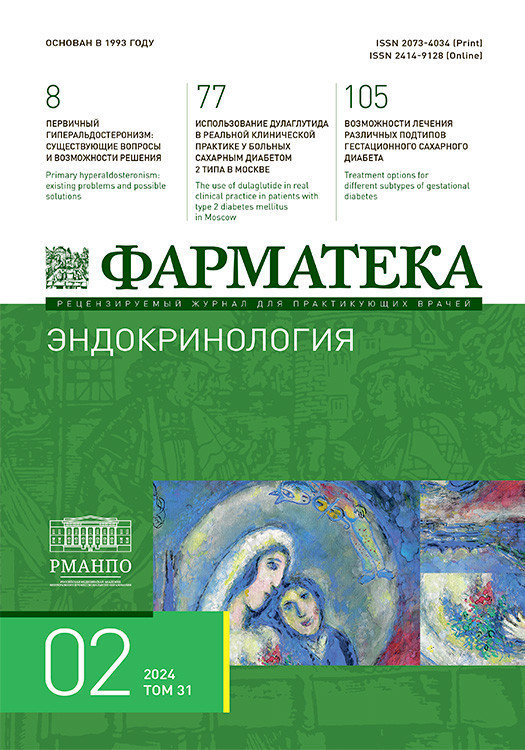Assessment of risk factors for osteoporosis in patients with osteoarthritis
Background. Currently, there is a frequent combination of osteoarthritis (OA) and osteoporosis (OP), which leads to a high risk of developing osteoporotic fractures. This is associated with increased attention to both of these nosologies. Objective. Evaluation of the 10-year risk of fractures in patients with OA. Methods. 62 people were examined; they were divided into two groups: with radiographically confirmed OA (n=42) and patients without a history of OA and with its radiographically absence (n=20). The 10-year risk of total fractures and hip fractures was assessed using the FRAX® model: a patient survey that included anthropometric indicators and medical history data. All patients were also assessed for the intensity of joint pain using a visual analogue scale (VAS). Results. The mean age of the respondents was 60.4±12.4 years. Body mass index (BMI) averaged 27.8±4.9 kg/m2, which corresponds to overweight. It was found that the older the respondent, the higher the 10-year risk of total fractures (p <0.001). In addition, it was found that the higher the BMI value, the higher the 10-year risk of total fractures (r=0.956, p<0.001). Taking into account risk factors for the development of fractures, patients were divided into zones: 45.3% – green zone, 45.8% – yellow zone, 1.9% – red zone. Pain syndrome with OA was recorded in 79% of the subjects: moderate pain – in 57.1%, severe – in 19%, weak – in 23.8%. A direct correlation between the severity of joint pain according to VAS (r=0.947, p<0.001) and the 10-year risk of fractures was established. Conclusion. Almost half of patients with joint pain have a moderate risk of OF. The 10-year risk of fracture according to the FRAX® model increases with patient age and BMI. Patients with more severe joint pain have a higher FRAX® score.Vaneeva A.S., Ivshina A.V., Filimonova O.G.
Keywords
osteoarthritis
osteoporosis
bone mineral density
pain
fracture



